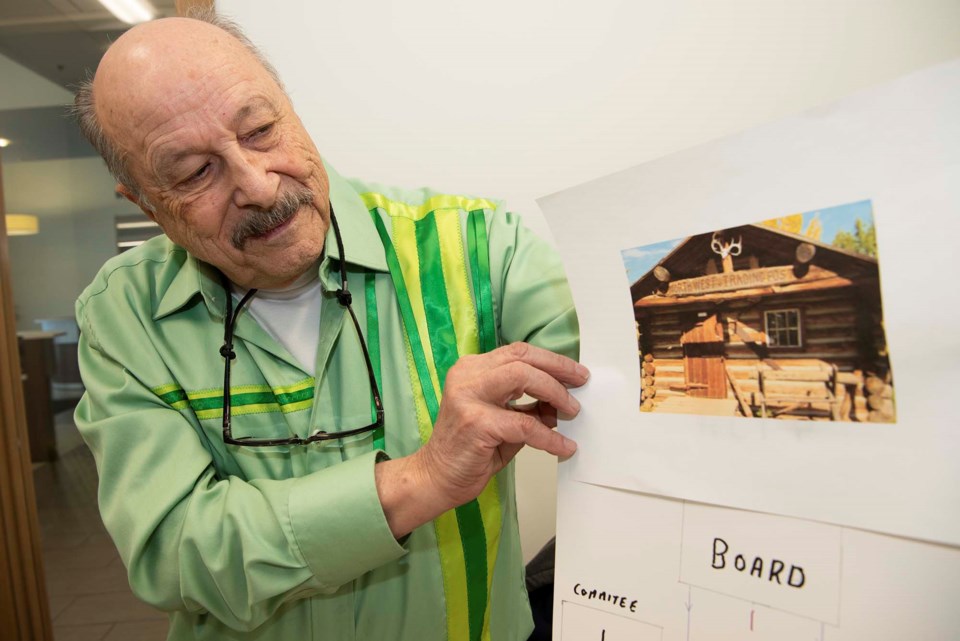A St. Albert man is looking for volunteers to help build an old-school trading post on the shores of the Sturgeon.
Members of the River Lot Trading Post Co-Op held their first organizational meeting at the St. Albert Public Library Feb. 1. The non-profit group aims to build and operate a trading post on St. Albert’s Historic River Lots 23 and 24 (home to the city's grain elevators) to serve as a tourist attraction and promote Indigenous history and culture.
Trading posts and the fur trade have a long history in St. Albert, Black Robe’s Vision notes. The first Métis settlers of this region were the results of intermarriages between First Nations and European fur traders. By the time Father Albert Lacombe formally established the St. Albert Mission in 1861, this region had long been home to many Métis employees of the Hudson’s Bay Company. The company also had a trading post here prior to 1889.
St. Albert Métis Elder Gary Gairdner said he and a few others came up with the idea for the trading post about a year and a half ago while discussing ways to promote Indigenous heritage in this community.
“We wanted to build a humongous Red River cart and put it at the entrance of St. Albert to show this is a Métis community,” he said, but the group later settled on the idea of a trading post.
Gairdner said the group envisioned a place that would sell authentic Indigenous products such as teas, moccasins, and ribbon skirts made by local artisans similar to what you might find at Western Varieties Wholesale (a popular supplier of Indigenous goods). They also wanted the trading post to supply plants used in traditional ceremonies such as sage and sweetgrass.
When some elders objected to the idea of exchanging money for such culturally significant plants, Gairdner proposed an old-school solution.
“Way back 300 years ago they traded furs for stuff,” he said.
“Let’s go back to the old trading days and you buy a fur and then trade it.”
Gairdner said customers at the trading post would total up the cost of what they want to buy at one counter and go to a second to “buy” a fur pelt with that money. They would take that fur back to the first counter and “trade” it for their goods.
Gairdner said the trading post would likely start off as a consignment store where local Indigenous artisans could sell their wares. Once it gets off the ground, the post would re-invest its profits into the community.
"We won't have any $900,000 executives," he joked.
Gairdner said the trading post could eventually be paired with a museum by the St. Albert grain elevators and help teach guests about local history.
“It’ll be a tourist attraction, and it fits right in with the heritage buildings.”
Gairdner said the group has mustered about 25 volunteers and found a donor for the logs needed to build the trading post building. The group is now looking for about 75 people to fill the various committees needed to get the project off the ground.
Gairdner, whose great-grandfather ran a trading post in Fort Providence, NWT, said he hopes to have the non-profit’s committees operational by March and the trading post open within two years.
Anyone interested in the trading post project should email Gairdner at [email protected].




